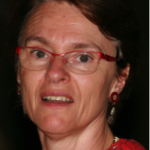Lien vers Pubmed [PMID] – 1619665
J. Mol. Biol. 1992 Jul;226(1):85-99
The levanase operon of Bacillus subtilis is controlled by RNA polymerase associated with sigma 54 factor and by the LevR activator that is homologous to the NifA/NtrC family of regulators. A “-12, -24” promoter is present at the appropriate distance from the transcription start site. The drastic down effect of base substitutions in the TGGCAC, TTGCA consensus sequence on the expression of the levanase operon confirmed the involvement of the “-12, -24” region in promoter function. Deletion derivatives of the upstream sequence of the operon promoter were constructed using translational levD’-‘lacZ fusions and were integrated as single copies at the amyE locus of the B. subtilis chromosome. A cis-acting DNA sequence that is required for activation of the operon promoter by LevR was identified. This regulatory sequence is about 50 base-pairs long and is centered 125 base-pairs upstream from the transcription start site in a region containing a 16 base-pair palindromic structure. This region of dyad symmetry functions as a regulatory element when placed up to at least 600 base-pairs upstream from the “-12, -24” promoter, although the efficacy of activation is lowered. Thus, in common with most sigma 54-dependent promoters, an upstream activating sequence (UAS) is involved in the control of expression of the levanase operon. The isolation and characterization of eight mutations in the UAS region confirmed the importance of the palindromic structure in promoter activation. Moreover, the expression of the levanase operon was inhibited by placing the UAS in trans on a multicopy plasmid, probably through titration of the LevR polypeptide. In conclusion, the levanase promoter region can be divided into two regulatory sequences: the “-12, -24” promoter recognized by the sigma 54 RNA polymerase holoenzyme and the UAS, an inverted repeat sequence that is probably the LevR binding site.




